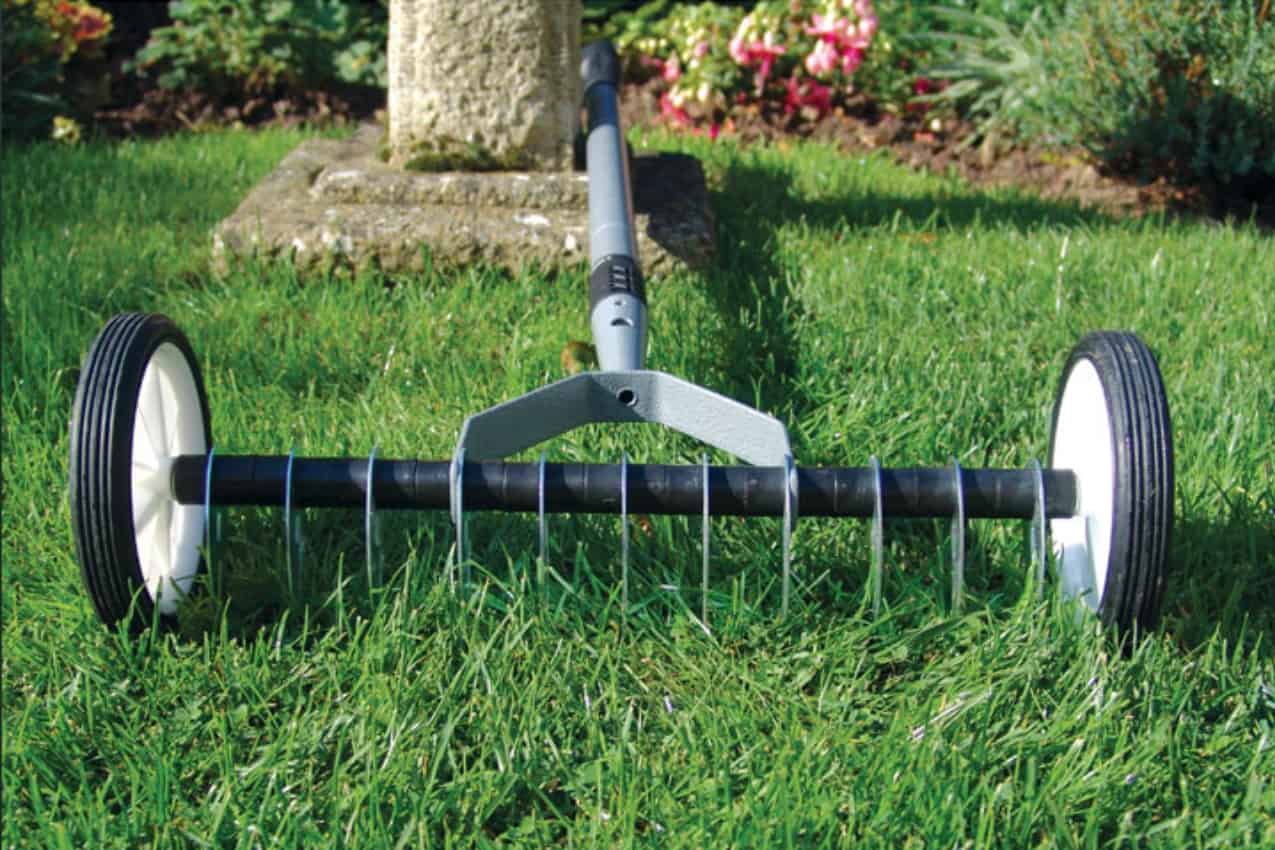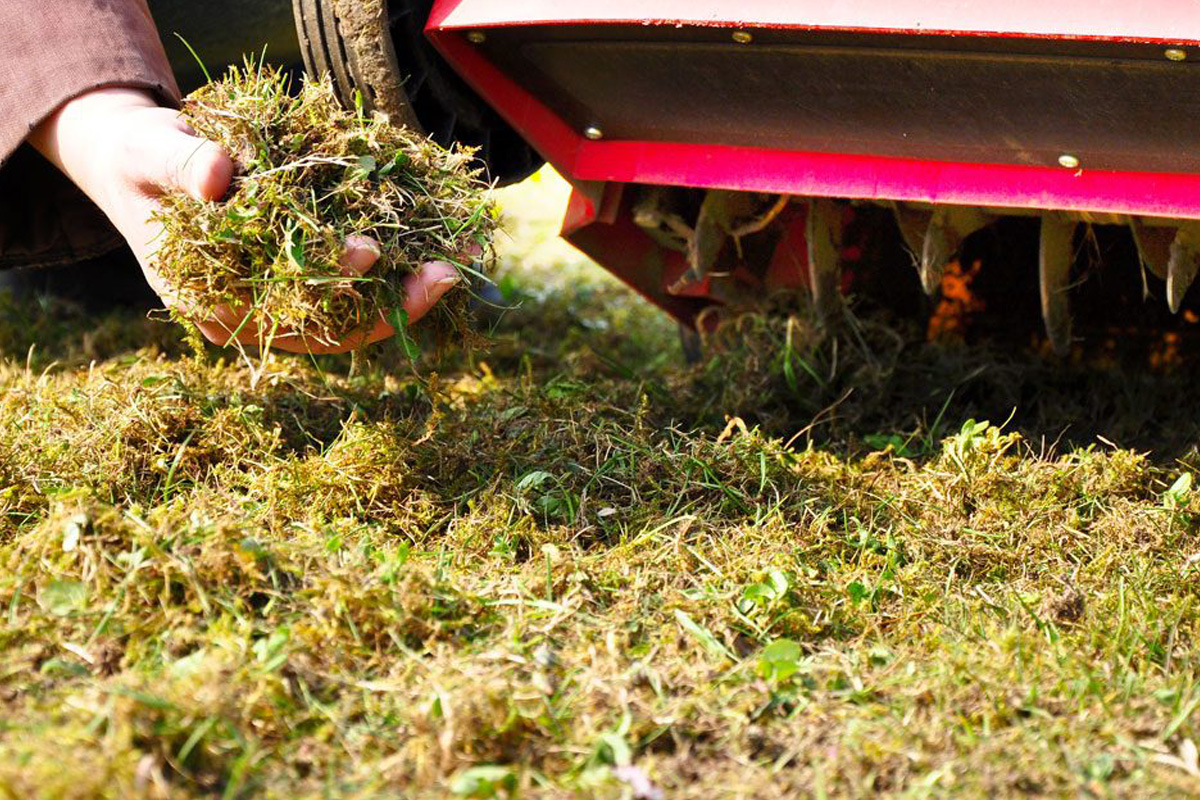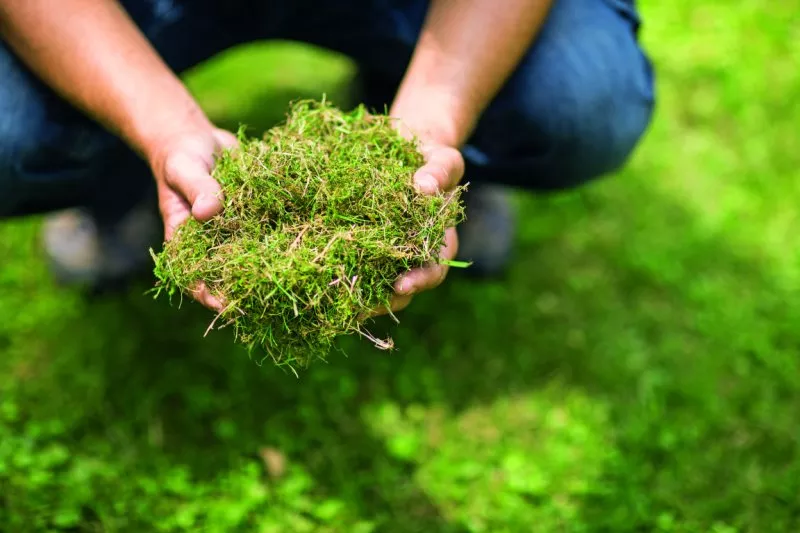Scarifying Lawn - Learn Why and How to Dethatch Lawn
Lawn dethatching, in short, means restoring the lawn to the state from before winter. Scarifying lawn involves encouraging plants to grow after the so-called dormancy period. You might ask: what is lawn dethatching and how to do it? Are any special tools needed? Check the most important information on this.

Lawn dethatching - what is it?
Dethatching is also referred to as lawn scarifying. It’s something gardeners do, and it involves making vertical cuts in turf. Thanks to lawn dethatching, the grass gains an increased ability to absorb water, air, light and other necessary nutrients. That’s why you should scarify your lawn - at least twice a year or more.
Why scarifying lawn? Pros and cons of dethatching lawn
Lawn dethatching not only improves the quality of your grass, but also:
- removes dead plant parts,
- gets rid of unwanted moss, sticks and residues of leaves.
Using a thatching rake, you can remove thatch. If it remains, it might cause development of fungi and dangerous bacteria.
Lawn dethatching before and after winter is a highly important process which promotes grass growth. If done before winter, it helps the plants to turn dormant more easily and effectively, while in spring it promotes their growth. Lawn dethatching done in summer might help with thickening the grass, making the lawn look more elegant. You can do it in any season - your garden will always benefit from it.

When to dethatch your lawn, according to experts
Scarifying lawn after winter is the most common date recommended by gardeners. But as stressed by experts, it can be done more often. Especially if you noticed the grass has stopped absorbing water correctly. It happens when there’s too much of the thatch material on the lawn. Because of it, water and other nutrients cannot reach the grassroots properly.
Thatch material appears on the lawn as a result of not gathering cut grass after mowing the lawn. After a few years of mowing and flattening, a characteristic layer appears on the surface.
When is the best time for scarifying lawn?
Lawn dethatching after winter is the basic date you should remember. The best month for this is April, when plants wake up from hibernation and begin their growth.
Scarifying lawn after first frosts and last snow is not recommended. If you do it, you might harm the lawn by damaging the stems and hindering their growth.
In addition to scarifying the lawn after winter, experts also recommend doing it before the season ends as well. This way, you remove the debris from the lawn and ensure good airflow for the lawn entering the dormancy period.

Lawn dethatching - what is the best dethatching tool?
You can dethatch the lawn using a tool called thatching rake. There are three different types:
- hand-held,
- gas powered,
- electric.
If the lawn is relatively small, a hand-held thatching rake is enough. Such a tool is fairly cheap, and it serves its purpose well. But using it might be problematic, especially for beginners. The fact that you have to use your muscle strength is another disadvantage.
Is your yard large? Consider a gas- or electricity-powered dethatcher. The electric version requires a power access, which might be problematic in some cases. The cable is another issue - if there are many ornamental shrubs and other plants in the garden, it might get tangled.
A gas power thatching rake is the most popular version - although it’s the most expensive one as well. But thanks to the drive, the whole process of scarifying the lawn is very easy and convenient.

How to pick the best lawn dethatching equipment?
If you decide to purchase a lawn thatching rake, you should pay attention to several important elements. Lawn scarifying might be difficult, but thanks to the right tools it gets easier and even pleasant.
First, decide between a hand-held, electric or gas-powered device. Consider your budget, but also the size of your lawn.
Second, think about the width of the tool. The wider it is, the more area you can cover at once. The depth of the cuts made in the lawn are another crucial aspect. The best devices allow you to regulate the length of the cutting elements.
How to dethatch the lawn - step by step
Scarifying lawn, regardless whether it’s young or old, always looks the same.
- First, mow the lawn short - make sure to finish the spots that you couldn’t reach with the mower using a hand tool.
- Turn on the dethatching tool and push it around the lawn just like you do with the mower. If the first time was not enough (it might be a result of the lawn being in terrible state), repeat it, but transversely across the previous round.
- After using the thatching tool, rake the lawn to remove all remaining elements.
- Feed the lawn with the right products and make sure to water it during the next few weeks.
Scarifying the lawn yourself - is it a good idea?
Dethatching the lawn yourself is a very good idea. But remember that a hand-held device might be difficult to use, and not everyone can afford an electricity or gas powered equipment. If you want, you can always hire a lawn service to do everything for you.

📍 When to dethatch your lawn?
Taking care of the property is essential, and scarifying the lawn is a part of it. When to do it? In spring, when the grass is still hibernating - dethatching encourages its growth. End of September is another suitable date - that's when grass prepares for the dormancy period.
📍 Scarifying the lawn - how deep?
You should remember about the right depth when thatching the lawn. The vertical cuts made with a special thatching rake should be from 5 to 15 millimeters deep. Some devices allow for 45 millimeters.
📍 Why dethatching the lawn?
Scarifying the lawn in autumn, spring and summer is important. Thanks to this method, you can remove dead parts of plants, moss and thatch. Dethatching improves light, oxygen and nutrients circulation, so the grass can grow healthy.
📍 How to properly dethatch a lawn?
Remember about the right depth of the cuts when dethatching the lawn. They should be at least 5 millimeters deep. You can do it using a handheld thatching rake or an electric or gas powered dethatching tool.
Featured articles




